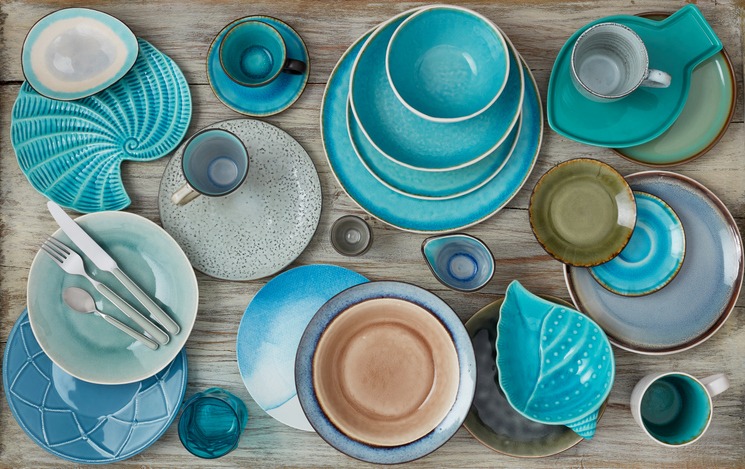Clay is used to create handmade pottery plates. This type of clay may be broadly divided into three categories. Porcelain, earthenware, and stoneware are the three categories. Their maturation temperatures are one of the key distinctions between the three. The maturing temperature is the typical fire temperature at which pottery clay becomes fully developed.
Earthenware clay requires a low maturation temperature between 1060 and 1154°C. Stoneware clay matures between 1140 and 1280°C, which is the medium temperature range. The maximum temperature range is between 1220 and 1300°C for porcelain. The reasons behind the characteristics each one displays are based on the variations in their maturation temperatures.
Because it absorbs too much water, earthenware cannot be used safely in the dishwasher or microwave. Higher maturation temperatures for porcelain result in increased power usage and cost. Because of the shortcomings of both porcelain and earthenware, stoneware is more widely used. This article will cover a lot of ground on stoneware plates.
A Stoneware Plate: What Is It?
Stoneware is a form of non-porous ceramic tableware constructed of a stoneware clay heated between 1140 and 1280°C. A stoneware plate seems earthy and rustic while still being artistic. Moreover, stoneware can be glazed to give a vibrant matte or glossy appearance. Stoneware plates are suitable for the dishwasher, microwave, and freezer.
Benefits of Stoneware Plates
The benefits of utilizing a stoneware plate are discussed below.
Durability: Stoneware has qualities that make it durable. This indicates that it has a longer use life and may be used for years before needing to be replaced. It is a great investment because it can withstand the test of time. As a result, if used and cared for properly, it can be handed along to the next generation. When you buy stoneware plates from craftspeople like Supper Club, this characteristic is ensured.
Natural stick-resistant surface: The surface of all stoneware plates is naturally stick-resistant. Its lack of porosity justifies this. One advantage of this sort of surface is that food and liquids placed on it cannot easily stick to it, making it simple to wash the dishes following each meal. Also, you save money by not having to purchase non-stick sprays.
Non-toxic cooking option: Stoneware is free of lead and other chemical coatings. As a result, it is a healthy cooking option as it does not release any harmful toxins into your food. Additionally, a stoneware plate does not retain odor from foods like fish.
Tolerates hot temperatures: Stoneware plates may be used in the oven and on the stovetop because of their propensity to withstand very hot temperatures. Cooking of the highest quality is assured when used on a stovetop.
Chip-resistant: Stoneware plates are chip-resistant. As a result, if one falls, it is less likely to shatter. This makes it an excellent choice for households with young children. A stoneware plate can last for many years because you do not have to worry about replacing it after a minor fall.
Concluding Thoughts on Stoneware Plate Advantages
The main reasons why many people prefer a stoneware plate are all the advantages that have been discussed in this article. If you invest in stoneware today, you are guaranteed to enjoy all these benefits.

